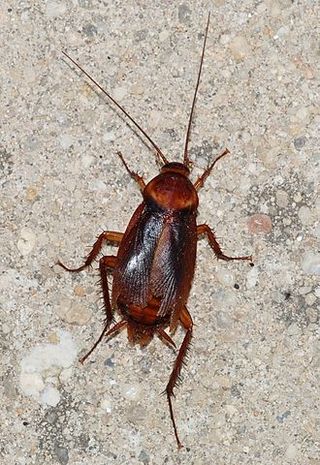Fear
Fear + Disgust = Entomological Horror
How Insects Complicate Our Aversive Emotions
Posted December 14, 2015

Of the seven-or-so universal emotions, two are aversive. Both fear and disgust are commonly evoked by insects. And while much of what we know about the workings of fear comes from the study of entomophobes, it is becoming less clear that such individuals are simply afraid.
There is a strong link between disgust sensitivity and fear of spiders. Following successful treatment not only are patients less fearful but exhibit a marked reduction in disgust towards spiders. But why are these emotions are so difficult to isolate in practice? Nobody would feel disgust upon coming to the edge of a precipice or be afraid of a pool of vomit. But when it comes to a cockroach under the sink or a spider in the basement, we are flummoxed. Five explanatory frameworks have been proposed.
First, the “imprecision model” is based on psychologists having found that people are often unsure about how to label their emotions (particularly when they are moderate), and insects often present complex stimuli giving rise to complicated emotions.
Another explanation is the “synergy model” in which fear and disgust feed one another. For example, researchers have found that fear of spiders amplifies disgust. And the reverse can also occur. Individuals who are disgusted by insects avoid proximity to these organisms and thereby miss opportunities for harmless experiences that would undermine their concomitant fear.
Third, is the “fear first model” which holds that disgust originates in fear. According to this theory, fear is a response to either danger or contamination—and the latter is disgust. This view provides insight into a common manifestation of obsessive-compulsive disorder: repeated cleaning in response to the fear of contamination.
The next model of aversion genesis inverts the previous psychological formula. In the “aversion genesis model,” fears are rooted in disgust. If an individual is experiencing disgust then she is likely to interpret movements on the part of the creature as threatening, thereby setting the stage for fear. And the preponderance of the scientific evidence supports such an emotional mutualism.
Finally, the “horror model” maintains that sometimes neither “fear” nor “disgust” is a sufficient description. Upon encountering a cockroach, we may perceive that there is no escape physically or psychologically. If we take flight (fear entails removing ourselves from the object) and leave the room, the creature will remain in our kitchen. And if we try to step on the insect (disgust entails removing the object from our presence) the creature is likely to evade us. Even if we succeed in crushing it, with the attendant slippery gooiness and stale-urine stench, we know that there is never a single cockroach. The term for such fear-imbued disgust is horror—the sense of being repulsed without being able to distance ourselves in body or mind.
The infested mind, indeed.


